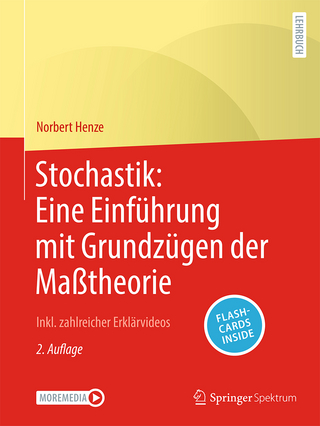Applications of Discrete-time Markov Chains and Poisson Processes to Air Pollution Modeling and Studies
Seiten
2012
Springer-Verlag New York Inc.
9781461446446 (ISBN)
Springer-Verlag New York Inc.
9781461446446 (ISBN)
In this brief we consider some stochastic models that may be used to study problems related to environmental matters, in particular, air pollution. Another way to study the behaviour of pollutants in general is through mathematical models. The type of models that we are going to consider in this brief are the stochastic ones.
In this brief we consider some stochastic models that may be used to study problems related to environmental matters, in particular, air pollution. The impact of exposure to air pollutants on people's health is a very clear and well documented subject. Therefore, it is very important to obtain ways to predict or explain the behaviour of pollutants in general. Depending on the type of question that one is interested in answering, there are several of ways studying that problem. Among them we may quote, analysis of the time series of the pollutants' measurements, analysis of the information obtained directly from the data, for instance, daily, weekly or monthly averages and standard deviations. Another way to study the behaviour of pollutants in general is through mathematical models. In the mathematical framework we may have for instance deterministic or stochastic models. The type of models that we are going to consider in this brief are the stochastic ones.
In this brief we consider some stochastic models that may be used to study problems related to environmental matters, in particular, air pollution. The impact of exposure to air pollutants on people's health is a very clear and well documented subject. Therefore, it is very important to obtain ways to predict or explain the behaviour of pollutants in general. Depending on the type of question that one is interested in answering, there are several of ways studying that problem. Among them we may quote, analysis of the time series of the pollutants' measurements, analysis of the information obtained directly from the data, for instance, daily, weekly or monthly averages and standard deviations. Another way to study the behaviour of pollutants in general is through mathematical models. In the mathematical framework we may have for instance deterministic or stochastic models. The type of models that we are going to consider in this brief are the stochastic ones.
Introduction.- Discrete-time Markov chain models.- Poisson models and their application to ozone data.- Some counting processes and ozone air pollution.- Comments.- Acknowledgements.- References.
| Reihe/Serie | SpringerBriefs in Mathematics |
|---|---|
| Zusatzinfo | 12 Illustrations, black and white; X, 107 p. 12 illus. |
| Verlagsort | New York, NY |
| Sprache | englisch |
| Maße | 155 x 235 mm |
| Themenwelt | Mathematik / Informatik ► Mathematik ► Wahrscheinlichkeit / Kombinatorik |
| Naturwissenschaften ► Biologie ► Ökologie / Naturschutz | |
| Technik ► Umwelttechnik / Biotechnologie | |
| Schlagworte | Bayesian inference • Homogenous Poisson models • Markov-chain models • ozone air pollution |
| ISBN-13 | 9781461446446 / 9781461446446 |
| Zustand | Neuware |
| Informationen gemäß Produktsicherheitsverordnung (GPSR) | |
| Haben Sie eine Frage zum Produkt? |
Mehr entdecken
aus dem Bereich
aus dem Bereich
Stochastik: von Abweichungen bis Zufall
Buch | Softcover (2025)
De Gruyter (Verlag)
CHF 48,90
Buch | Softcover (2024)
Springer Spektrum (Verlag)
CHF 69,95




